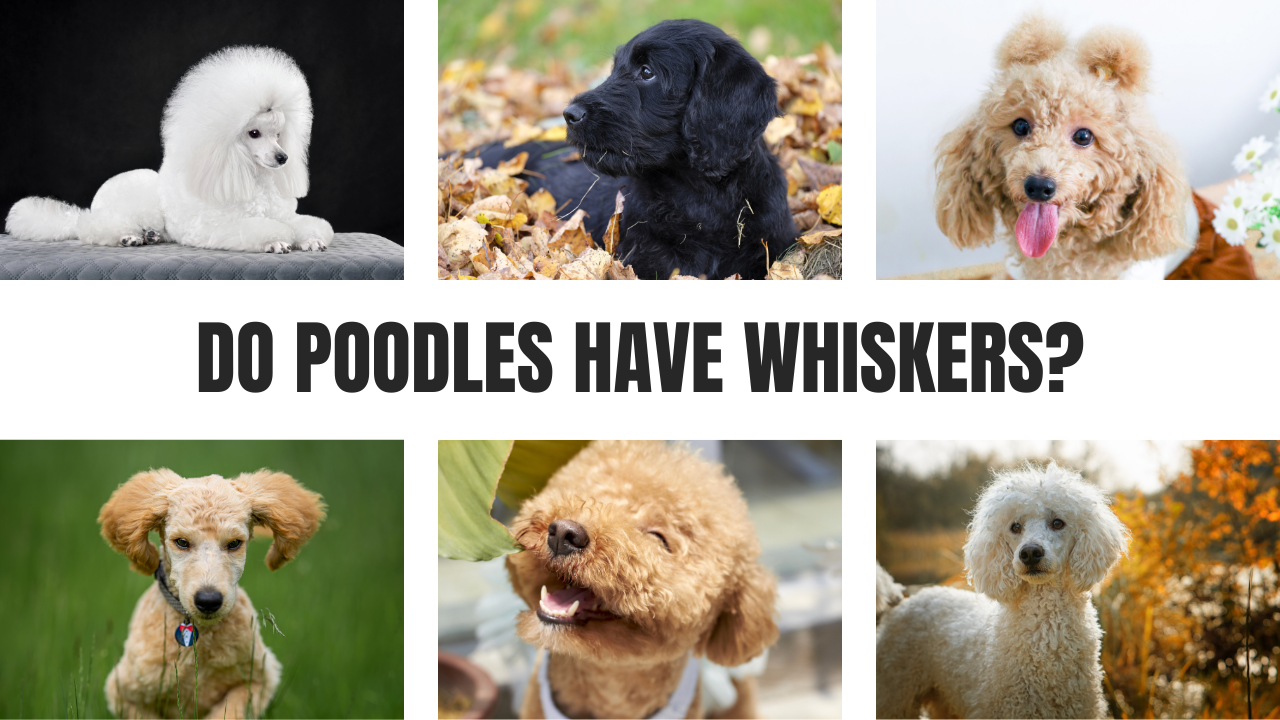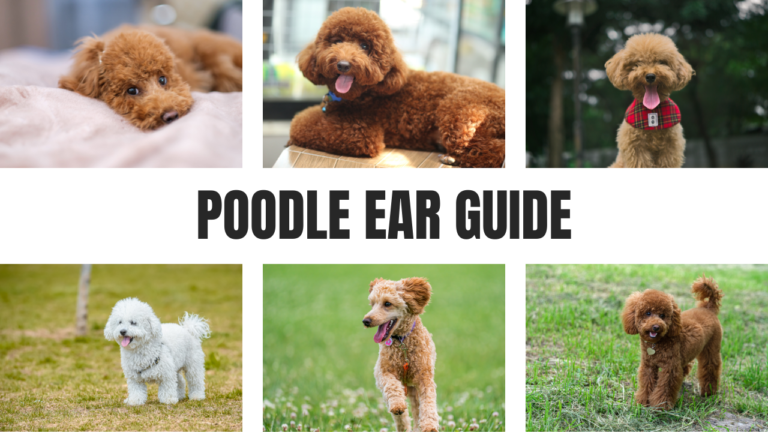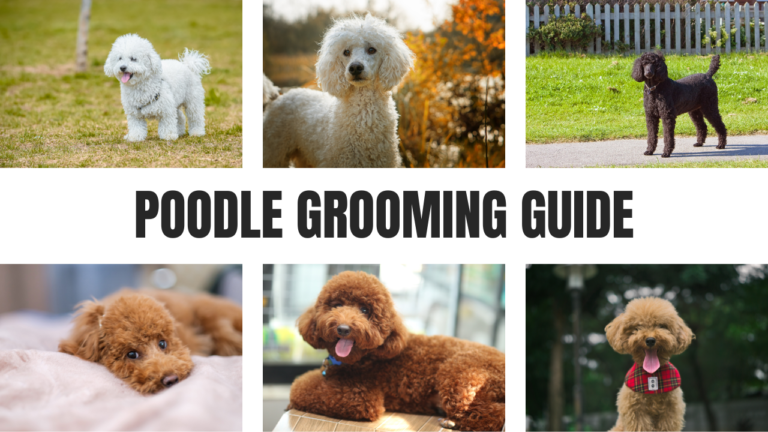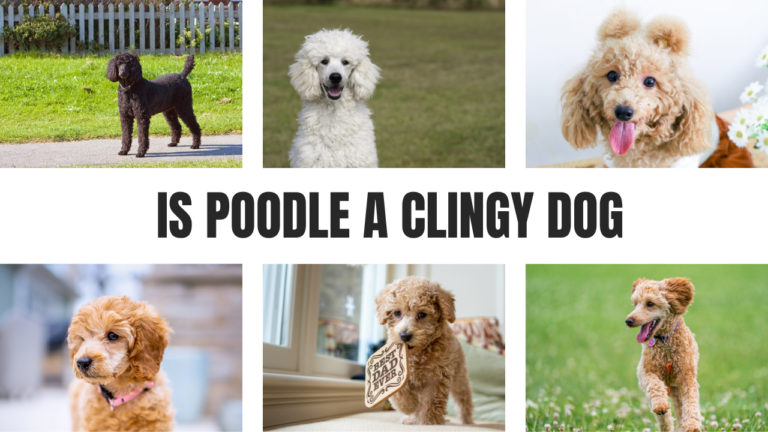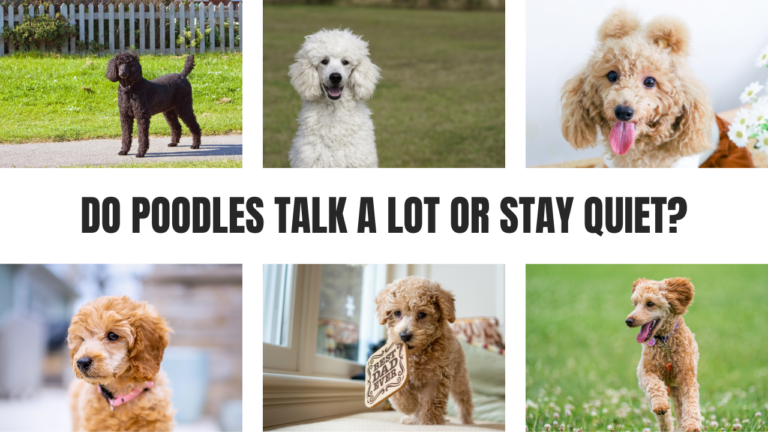Do Poodles Have Whiskers? The Truth Revealed In 2025
Have you ever wondered whether Poodles have whiskers? One of the distinctive features of Poodles is their whiskers, which add to their sensory capabilities.
Whiskers are essential features for many animals, helping them navigate their surroundings. This article will explore whether Poodles have whiskers and their significance.
Do Poodles Have Whiskers?
Yes, Poodles do have whiskers. Like all mammals, Poodles have whiskers, also known as vibrissae, which are long, thick hairs located on their muzzle, above their eyes, and under their chin.
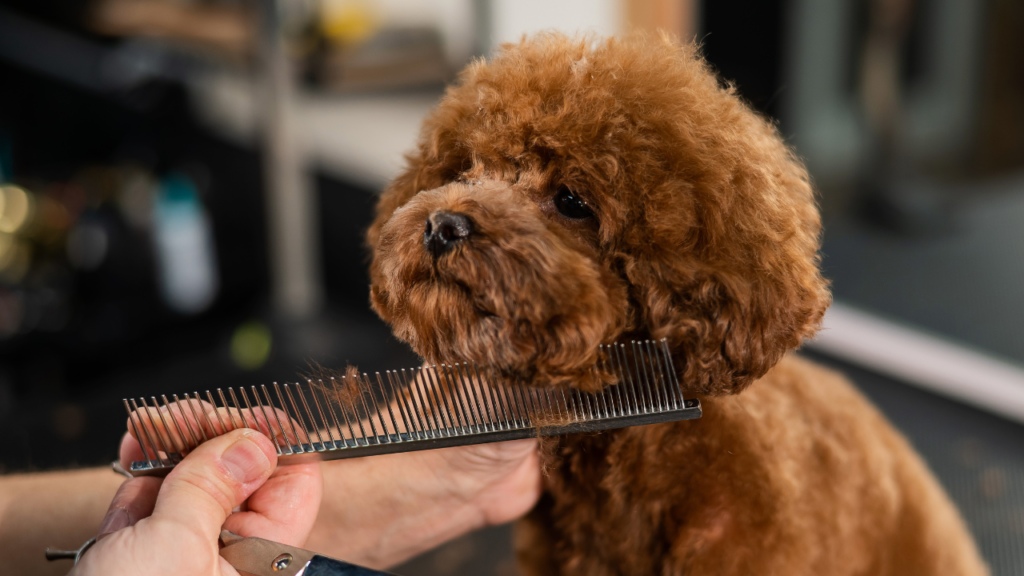
These whiskers may be less noticeable due to the Poodle’s curly fur, but they are present and serve a critical purpose.
The Types of Whiskers
Whiskers are specialized hairs that are more rigid and sensitive than regular fur. Poodles, like other dogs, have different types of whiskers, each serving a specific function. Mystacial whiskers, found on the snout, are the longest and thickest.
Supraorbital whiskers above the eyes protect by triggering reflexes when objects come too close.
Genal whiskers on the cheeks assist with spatial awareness, while intermandibular whiskers on the chin help detect textures and objects close to the ground.
Read More = Best Poodle Growth Guide You Needed In 2025
Why Do Poodles Have Whiskers?
Whiskers serve various purposes that are crucial to a Poodle’s well-being.
They help with navigation and spatial awareness by detecting changes in air currents and enabling the dog to avoid obstacles.
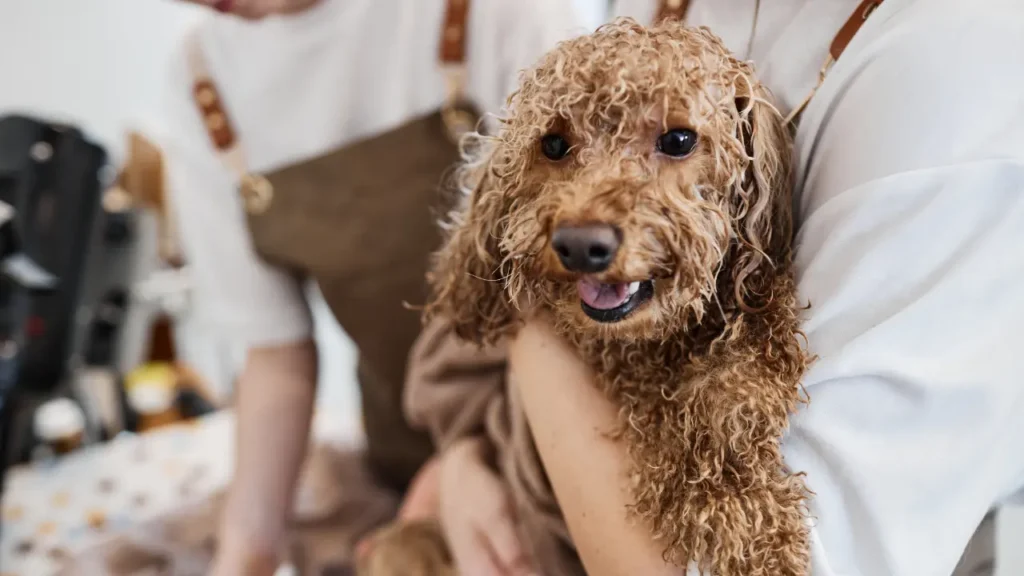
Whiskers also provide protection, particularly for sensitive areas like the eyes, by acting as an early warning system.
Additionally, they can communicate a Poodle’s mood, such as signaling curiosity or fear depending on their positioning.
Whiskers and Grooming Practices
Whiskers often come into focus during grooming sessions. Poodle owners sometimes trim whiskers for a neater appearance, especially for show dogs.
While this may be done for aesthetics, it’s important to consider the impact on the dog’s sensory abilities.
Whiskers play a vital role in how dogs perceive the world, and trimming them can lead to temporary disorientation.
Read More = Can Poodle Get Fleas
Should You Trim Your Poodle’s Whiskers?
While it’s possible to trim a Poodle’s whiskers, it is generally not advisable. Trimming whiskers can reduce their sensory abilities, making it harder for them to navigate their surroundings.
Groomers may trim whiskers for aesthetic reasons, particularly for show dogs, but this can leave the dog feeling disoriented and less confident in unfamiliar environments.
Although trimming whiskers doesn’t cause pain, it’s best to avoid unnecessary cutting.
Do Whiskers Grow Back?
Yes, whiskers grow back after being trimmed or broken. The regrowth rate depends on factors like the Poodle’s age and overall health.
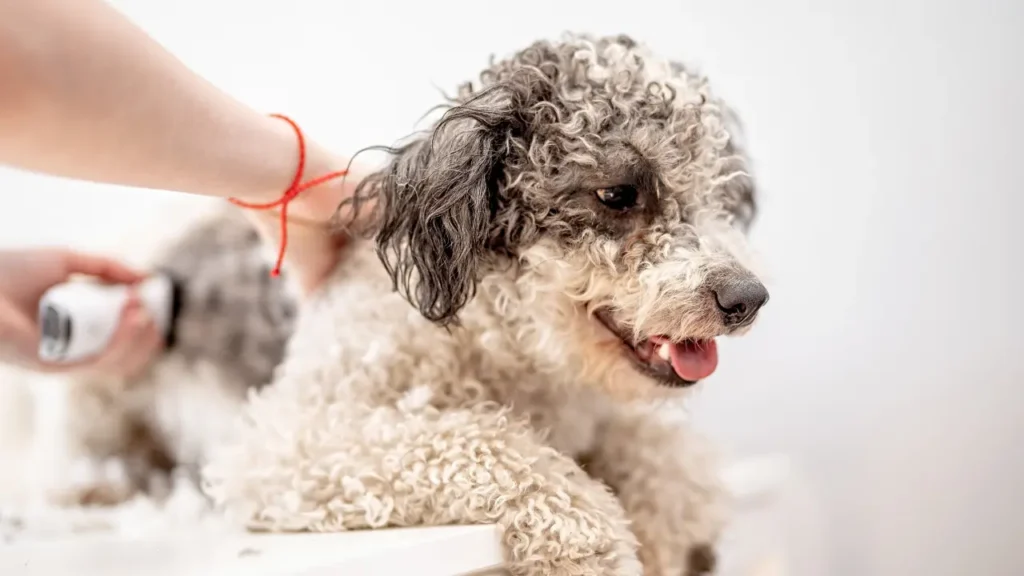
Most whiskers grow back within a few weeks to a couple of months. However, the regrown whiskers may vary in thickness or length compared to the originals.
Whiskers and a Poodle’s Daily Life
Whiskers play an active role in a Poodle’s everyday experiences. They help the dog explore their environment, even in low-light conditions.
Whiskers also assist in sensing the proximity of objects, making activities like eating, playing, or maneuvering through tight spaces much easier.
For Poodles who enjoy outdoor adventures, their whiskers can help them detect subtle changes in their surroundings.
Read More = Poodle Ear Guide
Caring for Your Poodle’s Whiskers
To maintain your Poodle’s whiskers, practice gentle grooming and avoid pulling or tugging, as this can cause discomfort.
Providing a balanced diet rich in nutrients like protein and omega-3 fatty acids can also support healthy whisker growth.
Unless necessary for medical or show purposes, it’s best to leave your Poodle’s whiskers intact to preserve their sensory functions.
- Avoid trimming whiskers as they are important sensory tools for your poodle.
- Gently clean whiskers with a damp cloth to remove dirt or food particles.
- Check for damage, ensuring the whiskers are intact and not broken.
- Provide a balanced diet to support healthy whisker growth.
Common Myths About Poodle Whiskers
Some misconceptions about Poodle whiskers persist. A common myth is that whiskers are just fur, but they are specialized sensory hairs with vital functions.
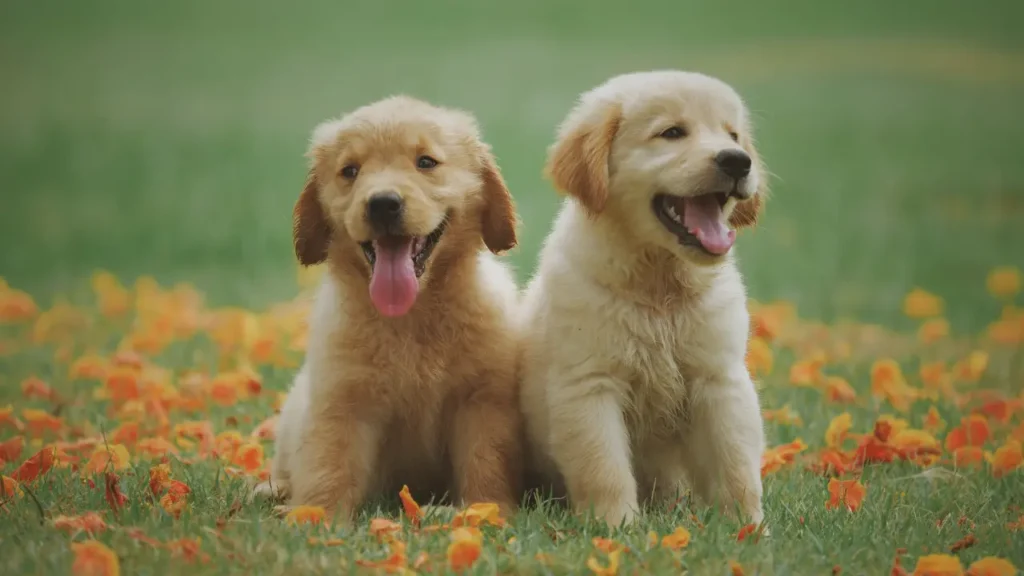
Another myth is that trimming whiskers is harmless; while it doesn’t hurt, it can affect the dog’s sensory perception.
Lastly, some believe whiskers don’t grow back, but they do, although the regrowth process can vary between dogs.
How do Whiskers compare to Other Dogs?
Poodles’ whiskers are similar to those of other breeds but may appear less prominent due to their curly coat.
Breeds with shorter or less dense fur often have more noticeable whiskers.
Despite these differences, all dogs rely on their whiskers for sensory input, and their functions remain consistent across breeds.
FAQs
Do All Poodles Have Whiskers?
Yes, all Poodles have whiskers. They are an integral part of their anatomy, even if trimmed for grooming purposes.
Is It Painful to Trim Whiskers?
No, trimming whiskers isn’t painful because they lack nerve endings. However, it can impact the dog’s sensory abilities.
How Long Do Whiskers Take to Grow Back?
Whiskers typically grow back within a few weeks to a few months, depending on the individual dog.
Are Whiskers Important for Older Poodles?
Yes, whiskers are beneficial for Poodles of all ages, helping them navigate their environment effectively.
Can Whiskers Indicate Health Issues?
Damaged or brittle whiskers could signal nutritional deficiencies or health problems. Regular veterinary check-ups can help address any concerns.
Conclusion
Poodles have whiskers, and these specialized hairs play an essential role in their sensory perception and overall well-being.
While trimming whiskers is common in grooming practices, it’s crucial to consider the potential impacts on your Poodle’s abilities.
By understanding and caring for their whiskers, you can help your Poodle live a happy and healthy life.

